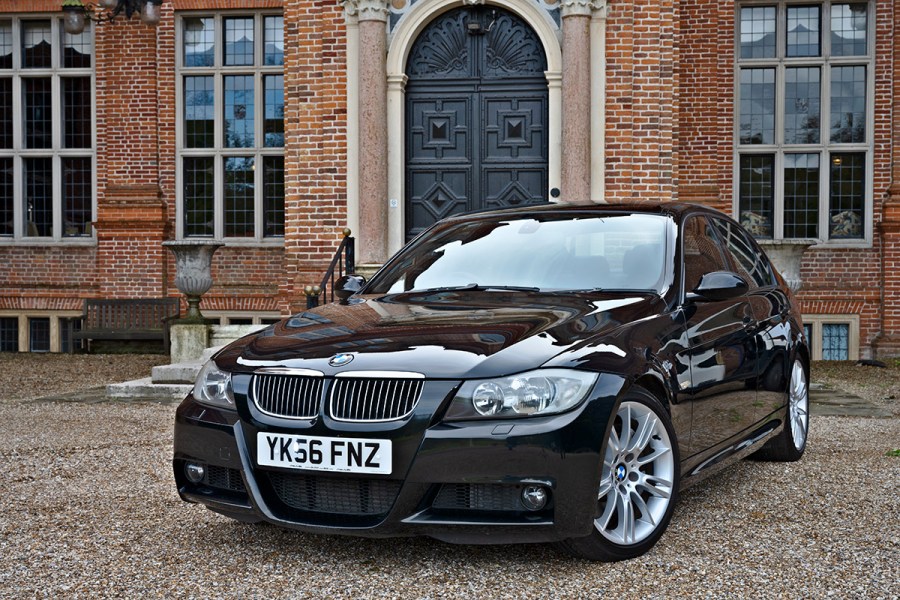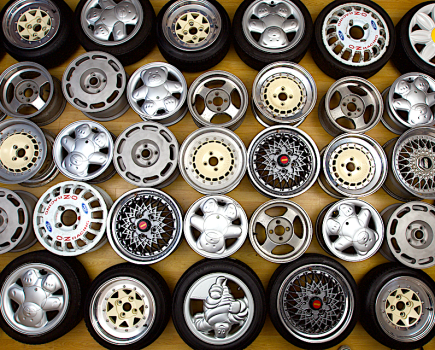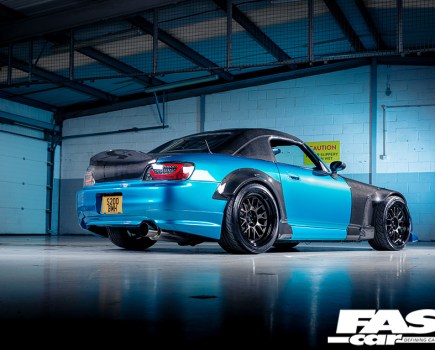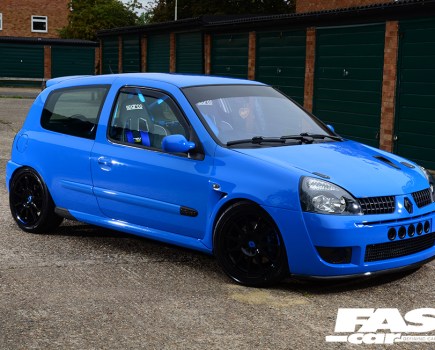The fifth-gen BMW 3 Series E90/E92 is one of the cheapest BMWs you can buy today. As a result, it’s one of the best used cars to buy thanks to its amazing value for money. However, you need to go in with eyes – and wallet – open. This buying guide will explore the key areas, most common problems and expert tips when buying a used BMW 3 Series E90 or E92.
It can’t have escaped anyone’s notice how cheap E90s are now, taking the E46’s mantle of cheap winter banger and also the relatively inexpensive ‘nice’ car. From the bog standard 318i-in-black flotsam washing around Facebook and eBay for sub £1000 to the good-spec late coupés for a lot more, there are 1000s of these around. But are they any good, or are they now a marginal old BMW ready to cost you dearly? A bit of both, and it does help if you can do a bit of spannering yourself.
BMW 3 Series E90 and E92 history
Based mechanically on the 2004 1 Series, the E90 arrived in 2005 and featured such things as the push-button stop-start and a lack of a temperature gauge. It must be said that the E90 cabin really hasn’t aged well. The model range was similar to the previous E46 with the 318i and 320i with the four-cylinder 2.0 Valvetronic unit along with the 2.0 M47N diesel for both 318d and 320d cars – no 316i here, though. New N52 engines, though, were used in the 325i and 330i, while the 330d was the M57N2 as launched in the E60 530d.
2006 saw the launch of the 335i with the twin-turbo N54 and the twin-turbo 335d, while the E91 Touring arrived later in the year, followed by the E92 Coupé and E93 Convertible in six-cylinder form only. In 2007, there were many engine changes – the N46 petrol was replaced by the N43 direct-injection unit, the M47N diesel was replaced by the N47, the N52 was replaced by a direct-injection N53 and the 3.0 M57N diesel was replaced by the new N57 on the 330d cars for the 2008 model year. The 325d, though, retained the older engine for now. The 2.0 N43-engined coupé and convertible cars were launched at this point as the 320i.
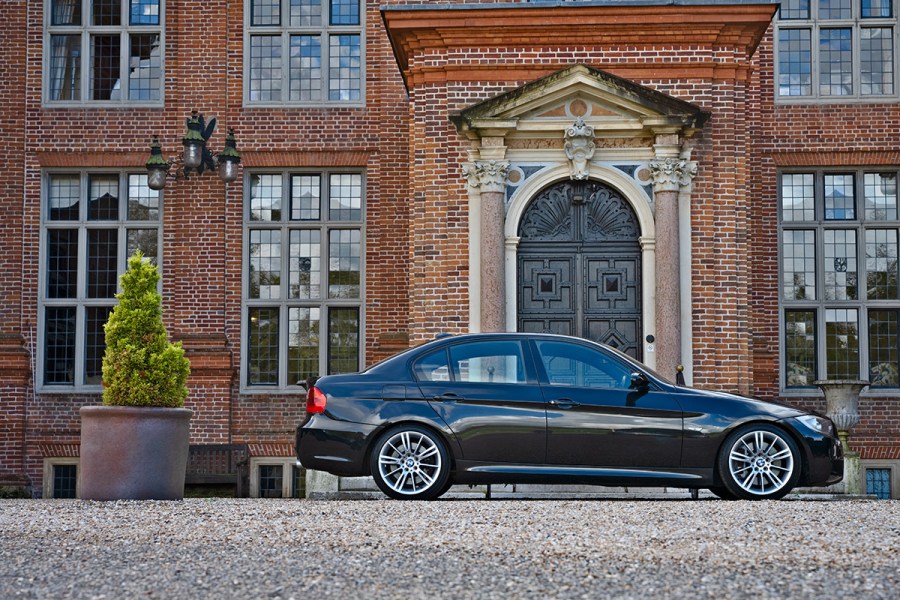
Mid-life update
The E90 was given the LCI facelift in late 2008 – new headlights and rear lights with LED bulbs, a new ‘double-hump’ bonnet and a new-style grille that gave the E90 a much better and more modern appearance. The bumpers and wheels were also revised. The 325d was also given a detuned version of the N57 3.0 diesel engine, but the 335d retained the old unit.
In early 2010, the 163hp 320d Efficient Dynamics arrived using a new version of the N47 diesel from the new F10 520d – this used different gearing and taller-aspect tyres as well as auto stop-start to maximise economy. By this time, BMW replaced the twin-turbo N54 in the 335i with the single-turbo N55, and a lower-powered 316d arrived.
Production wound down in 2012 in preparation for the all-new F30 3 Series that has recently gone out of production.
Trim and equipment
In terms of trim and equipment, there are ordinary ES (four-cylinder) and SE versions. The ES versions having standard 16” alloy wheels, manual air conditioning and no cruise control. SE models added digital climate control and a multi-function steering wheel, as well as rear-only PDC parking sensors. The M Sport cars featured Sports seats in Alcantara suede, 17” or 18” wheels, and uprated suspension, plus M Tech bumpers, sills and high gloss Shadowline exterior trim replacing satin black trim.
Options include full leather, xenon headlights, headlight wash, rain-sensing wipers, cruise control, PDC front and rear, Professional Navigation with or without TV function, Logic7 or Hi-Fi upgraded speakers with the Professional CD player, seats with electric adjustment and/or heating, metallic paint, six-speed automatic transmission, electric glass sunroof, electric rear screen blind and through-loading rear seats.
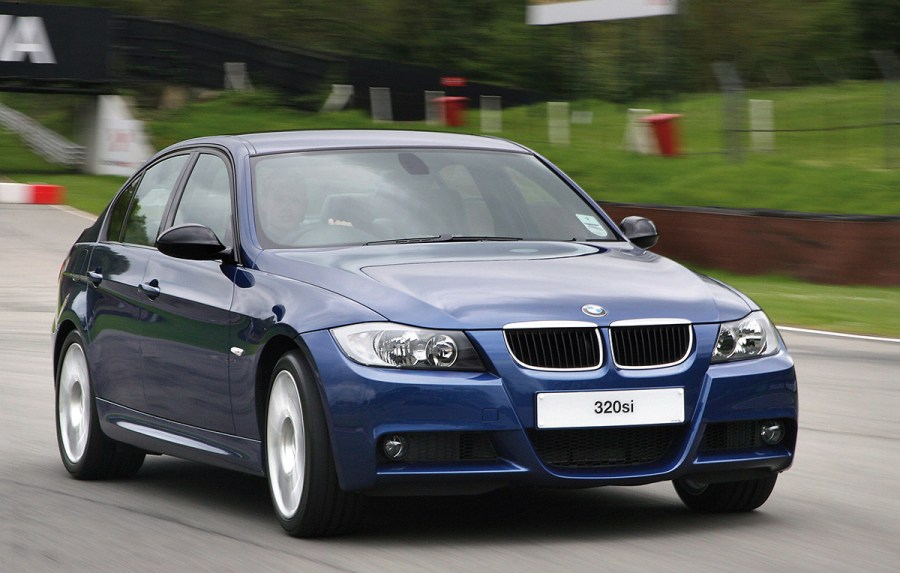
The BMW 320si E90
The 2006 320si was a homologation special built to enable BMW to race the 320i in the WTCC. It was a 320i M Sport with unique 18s, bigger brake discs, and a special engine – a short-stroke, big-bore N45 with no Valvetronic and built with BMW Motorsport parts – very little apart from the sump and some gaskets interchanges. With 170hp, they were quite brisk, but they have serious engine issues. The biggest is that the tops of the cylinder liners break up, resulting in compression loss. It can be fixed by having the block bored and new liners fitted, and eventually, most original unmodified engines will suffer this fate. Only 2600 were built, with only 500 cars produced for the UK market.
Our Choice
Saloons are okay, but the E91 Touring looks better and is vastly more useful. To that end, our choice would be a 2009 LCI 325d M Sport with the last of the M57 engines – you can always have a mild remap to release 330d power. Manuals are okay, but the six-speed automatic would just be nicer. If practically wasn’t an issue? It would have to be a coupé. But a late N52 or an N53 with potential injector dramas? We think we’d go for the later cars because newer and stock up on new injectors.
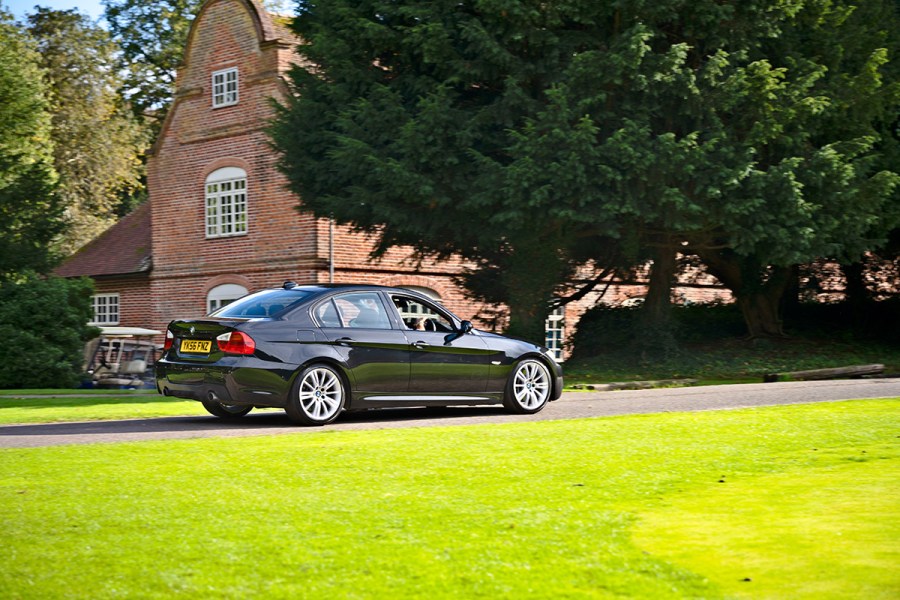
What to look for when buying a BMW 3 Series E90 or E92
Below, we take a look at the key areas you should look at when buying a used BMW 3 series E90 or E92.
Body
The E90 doesn’t really rust unless it’s been repaired after an accident or it’s lived by the sea all its life, and coupés and convertibles have plastic front wings. Upgrading with M Sport bumpers and bits is simple and not pricey if you can get the right colour parts. The door locks and window regulators are vastly more reliable than the rubbish used on the E46, and the interior trim is extremely rugged.
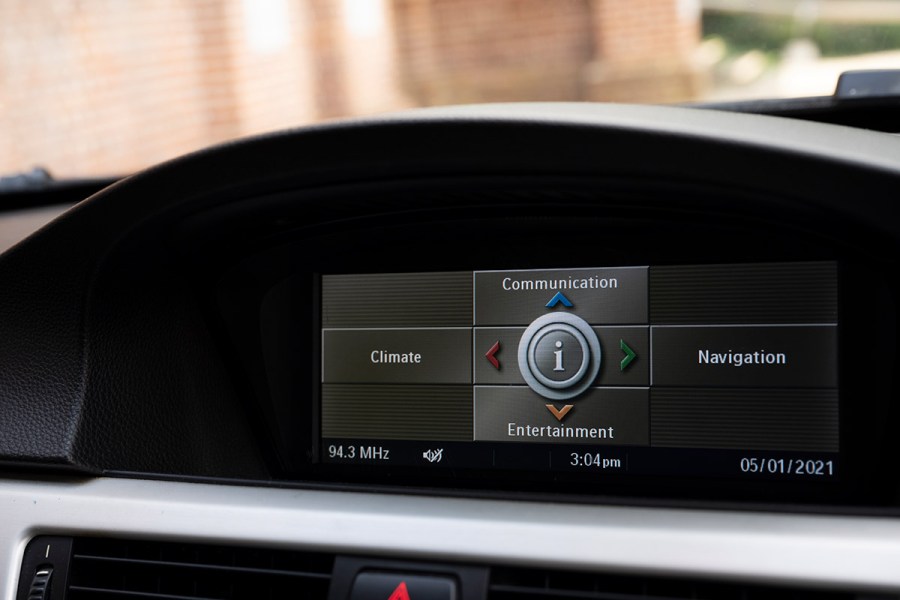
Electrics and trim
The E90 electrics are reliable enough, and the battery is coded to the car. It needs to be the correct type, and if you replace the old wet-cell type battery with an AGM-type battery (or vice versa), you must code the new battery in. Be sure to check out our guide to the Best Car Battery if you’re looking for advice and information on what the different types of batteries are and what the wording means.
E90s have an electric steering lock, and there are two possible error messages. The orange steering wheel symbol indicates a problem – clearing the fault code and resetting the lock counter with diagnostics cures it, and you can fit a resistor mod to fool the lock, but the lock normally needs removing and cleaning out. What fun that is. The red steering wheel symbol of doom means the steering is locked, and that means a breakdown lorry, so get the orange symbols checked and cleared when they occur.
Instrument clusters rarely fail, but the radio pixels certainly can, not that this is expensive to replace with a used unit. The comfort access relay (keyless entry) fits behind the back bumper or behind the rear boot trim panel and can fail, making the car undriveable. Unplugging it restores the car to life and onto normal-key unlock mode.
iDrive issues
The iDrive controller (CCC unit) on nav-equipped cars can fail, and it’s an expensive repair. Xenon lights are fantastic to use, but replacements and igniter units are pricey especially the adaptive xenons. The LED rear lights on LCI cars can be pricey as well unless you buy used. BMW recalled the E90 for the battery cable, so make sure you’ve had the BMW recall done. The convertibles are known for water leaks and can be a challenge to fix.
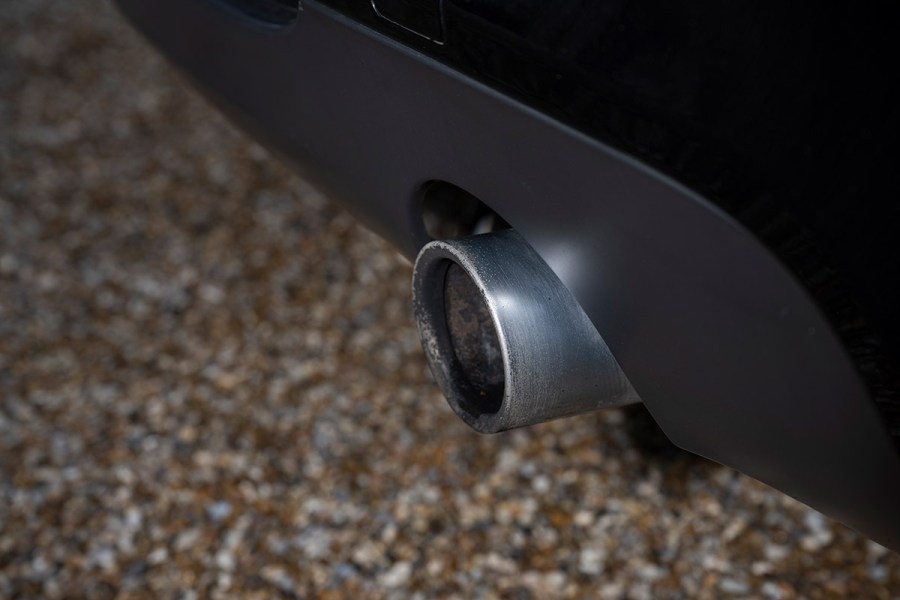
BMW 3 Series E90 Engines
Four-cylinder petrol engines
Starting with the petrol fours, the N46 was okay but had several problems – timing chain and tensioner rails, Vanos units, Valvetronic motor and sensor, plus a multitude of oil leaks and worn piston rings/stem seals. They’re only worth having if they are oil-tight and perform really well, and even then, the timing chain assembly ideally needs replacing by 100,000 miles. Watch for oil smoke after idling. Here’s a guide to the different types of car exhaust smoke so you can identify if any oil smoke is visible.
Widely regarded as being ‘not very good’, the N43 was beset with misfires and running problems 10 years ago. Using Piezo injectors as part of a direct-injection system, injector trouble, as well as failing coil packs, made many an N43 owner’s life a nightmare. It can all be fixed, of course, but at a price – revised injectors are around £300 each plus fitting and coding, and you’d hope you don’t need the other three. Many have been replaced already, but you still have coil packs (around 40 quid each) and the NOx sensor – that’s another £350 and is BMW only.
There is also an electric water pump and an electronic oil pressure control switch to think about. The N43 doesn’t leak or burn oil like the N46 could, and you might be lucky, but we wouldn’t.
Four-cylinder diesel engines
The 2005-2007 M47N diesel from the E46 is good, but on 320d cars, remove the swirl flaps and fit blanks – the 318d doesn’t have them. They need a new breather unit every 40,000 miles as well. Turbos can fail, but you can buy new centre cartridges, and the turbo isn’t too hard to remove. The late 2007-onwards N47 has the infamous rear-mounted timing chain. While some engines do 150,000 miles or more on the original, 100,000 is a good time to replace it, including the oil pump chain – bank on £1000 using genuine BMW parts.
Diesel high-pressure pump failure is becoming increasingly common. We’d recommend a £350 reconditioned pump at the same time; if the pump fails, it will write off the entire fuel system with metal swarf – injectors, fuel rail, in-tank pump, the lot. The N57 diesels are going the same way but aren’t as prone. The older M57N diesel is a pretty good unit that rewards regular oil changes like the M47N does.
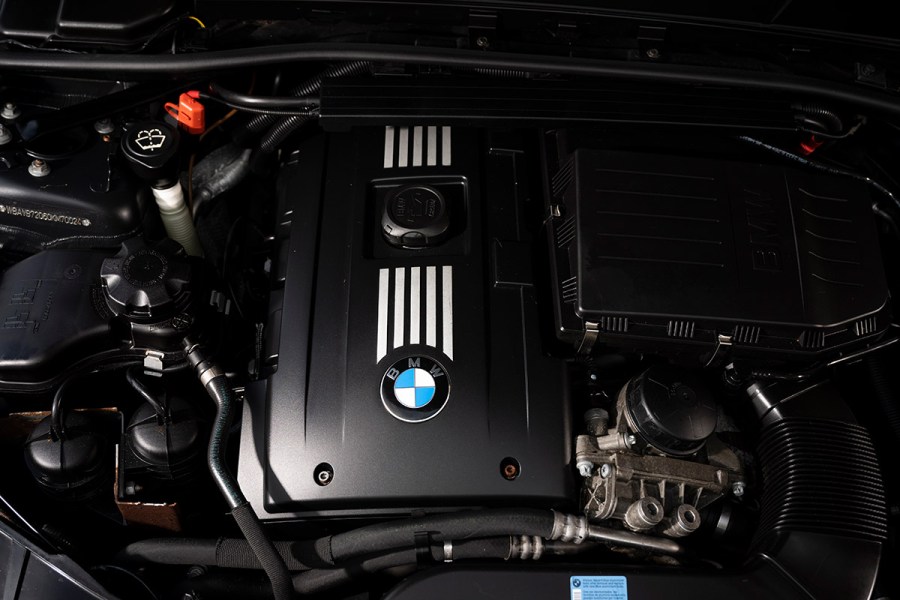
Six-cylinder petrol engines
The N52 six-cylinder petrols are better but there are other issues. The timing chain setup is the same design as the N46 and is less prone to problems. They use an electric water pump, and we would be looking at fitting a new one to the car as a precaution. N52s run hot like the N46 and cook the rubber gaskets, resulting in the standard oil leaks: the cam cover, oil filler cap seal, and the oil cooler/filter housing are the three amigos. You may be aware of worn inlet and exhaust cam bearing ledges. The camshaft runs in a removable carrier on the exhaust and directly in the head on the inlet side.
The steel oil pressure sealing rings eventually wear a slight groove in the head, resulting in oil pressure to the Vanos units being too low, resulting in rough running and an EML glowing. Repair involves another head, often enough to financially write the car off unless you can DIY. It’s not that common, but be aware. Watch also for a worn alternator belt tensioner – if you can see it wobbling when running or there is evidence of the belt rubbing against the block, spend 50 quid and an hour fitting a new one with a new aluminium stretch bolt. If the belt comes off, it gets behind the crank pulley and is forced past the oil seal and into the engine.
The N53 that replaced the N52 for 2008 has replaceable inlet bearing ledges, but you still have the same coil/injector/sensor faults as the N43. The tuneable 335i was a twin-turbo 3.0 N54 with high-pressure direct injection, and they were very quick. Many have suffered from 10 years or more years of hard driving with bottom-end problems. Be very wary of buying one of these.

Transmission
E90s use either a six-speed manual or a six-speed auto (and DCT on later E92/3 335s). Manuals are okay but beware of crunchy second-gear synchros on later 320ds with auto stop-start. A juddering clutch will probably also involve an expensive new flywheel. An annoying driveline vibration can be a missing prop balance weight.
Automatics are nicer and are generally reliable. Faults can be down to software or a blown bridge seal between the valve block and the transmission casing, but a good used box is a lot cheaper than a rebuild. E90 gear linkages seem much more robust than older BMWs.
The differential on the 318i and 320i cars has always been flaky. They use a smaller 1 Series diff, and the oil used is very thin and cannot be changed unless you suck it out via the refill hole. DIY rebuilds are very difficult, but a good used diff is £250 – changing the oil to EP90/140 synthetic is a good idea. The other E90 diffs are generally very good.
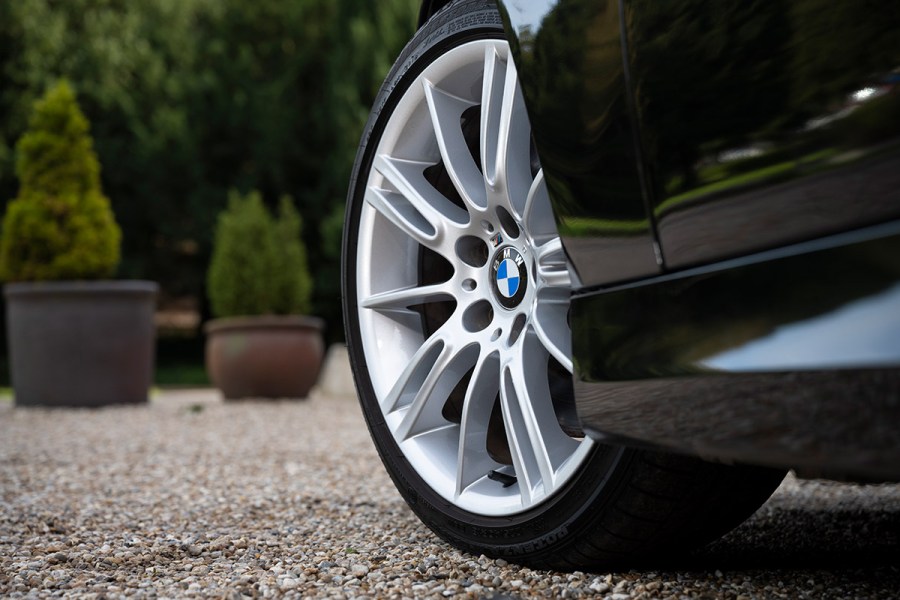
BMW 3 Series E90 suspension, brakes and steering
The E90 front suspension is pretty reliable. Front dampers are past their best by 100k, and at the back, tired dampers are easy enough to replace, except on Tourings where BMW persisted with its stupid top mount design requiring that all the boot trim needs removing. Rear subframe rot is common on early cars from harsh climates, while bushes and ball joints are all wear items, as are the brakes. The hydraulic and electric power steering racks are reliable and cheap to replace secondhand.
ABS modules are a common fault on these – cheap on four-cylinder cars, where there are plenty of good used units, but those on six-cylinder cars are not so common and rather pricey. ABS faults can be the sensors, but they can also be caused by rusted trigger rings on the rear outer CV joints. To repair this, you remove the driveshafts, get the old rusted and split rings off and clean up the CV joint before heating new rings in boiling water and drifting them on. A non-existent brake servo action will be a failed vacuum pump on the back of the cylinder head on the 318i and 320i. This isn’t fun to replace
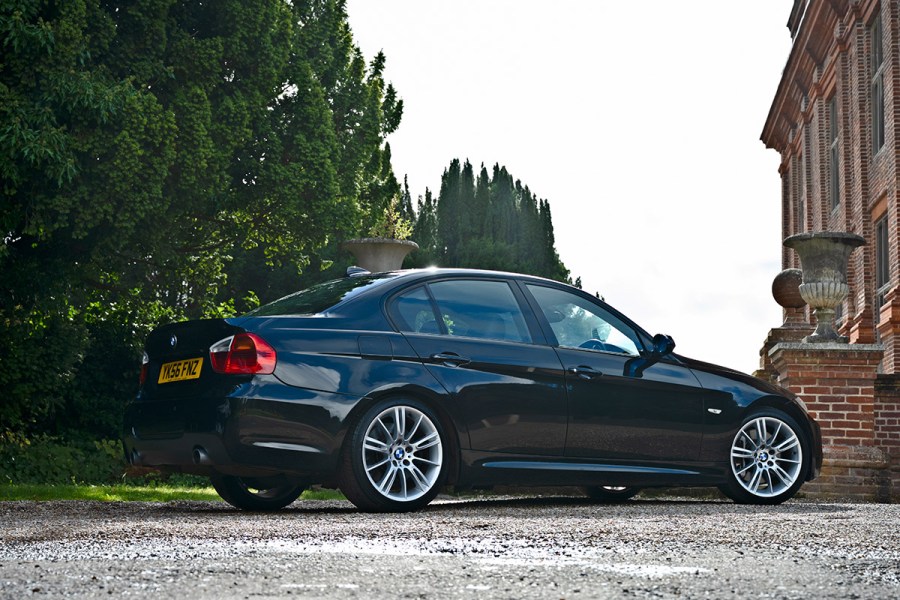
BMW 3 Series E90 and E92 prices
Early E90 318i or 320i Saloons are pretty much landfill now, and there are very few left in decent condition. Pay a grand and no more for a tidy one with a decent MOT. M47 320ds are all high-mileage now, and you might be the last owner.
325i and 330i cars are worth a bit more, but early examples are in the £695 tax bracket, which pretty much writes them off unless mint. The top money for a saloon is about £5000 for an 11-plate 330d M Sport – perhaps the one we’d go for. E92 coupés are still worth good money, and the cheapest will be £1500 for a 320i SE, but we wouldn’t. Pay a bit more and buy either a 325i or a 320d, bearing in mind the chain dramas.
The prices asked for the most expensive cars are eye-opening – £18,000 for 11-plate 335d M Sport Tourings and coupés seems a bit ambitious compared with prices of 4 Series cars.
Verdict
The E9x range is indecently cheap now, and there’s something for everyone and (almost) every budget with such an extensive selection of engines and body styles to choose from. It’s not all great, though: some engines definitely need avoiding, and a poverty-spec E9x will not exactly thrill you. And, while the platform is overall a reliable offering, there are still plenty of pitfalls to be aware of. However, do your research, choose carefully, and pick an engine, body and spec combo that excites you and you can buy yourself a BMW bargain that will do everything you want and do it well, all without breaking the bank, and you can’t ask for more than that from a used buy.
Words: Andrew Everett. Photos: Jason Dodd & BMW.
Love German cars? Be sure to check out our premier German Car Festival event at Goodwood Motor Circuit.

